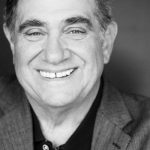Editor’s note: On Tuesday, Sept. 3, Hemet Unified School District Superintendent Dr. Barry Kayrell and Trustee Vic Scavarda of Idyllwild met with the Town Crier to discuss the “State of the District” and trends in the next few years. This is the last of three parts of the interview.
How will the “core curriculum” [Common Core State Standards] affect teaching and learning going forward?
“That’ll be fun to see,” Kayrell said. “It’s the most significant change we’ve seen in pedagogy in many, many years. Technology has greatly impacted how teachers teach.”
Kayrell described the change as blending and flipping the former instructional models where the teacher stood before the class, like Socrates, and was the keeper of knowledge. Going forward, the core curriculum will shift emphasis to the students to do their own research on each subject.
In his opinion, this will enable teachers to garner a more authentic assessment of the students learning. “Kids will have to show how to build models to apply practical concepts to problems,” Kayrell said. “No longer will a verbatim repetition of the teacher’s lesson be sufficient. Students will have to display problem-solving skills and teamwork.”
“We’ve piloted several segments [of the core curriculum]. They provide an almost instantaneous result,” Kayrell said.
Under the core curriculum, second-grade students will work in groups and with hands-on use of computers. “It’s a balanced assessment producing a skill they can use in a future occupation,” he added. “Future third- and fourth-grade students will work with robots. The kids will learn to program robots to do tasks.”
Last spring, a harbinger of the coming changes was demonstrated at HUSD”s Western Center Academy. The middle-school students won a regional competition for robot construction in San Diego and traveled to St. Louis for the world competition.
What’s your opinion of HUSD’s Academic Performance Index results? Any comment on Idyllwild’s API and Standardized Testing and Reporting results?
“They were a mixed bag,” Kayrell said. “I was disappointed. Both the county-wide and statewide trend is down. But a lot of schools did go up.
“While we had schools struggling, I’m pleased that they did go up. And Jacob Wiens Elementary had a 21-point increase,” Kayrell said. “But I’m most proud of Idyllwild, which went over 900 this year. They are in the top 1 percent of California’s schools.
“That’s a big, big deal,” he stressed. “It’s a reflection of the school’s demographics and a good cross-section.”
Teachers concentrated on the subgroups, such as special education and socio-economic status. “Those were the biggest gains; the most improved,” Kayrell said happily. “Those were the biggest changes which I’m most proud of. It’s exciting to be a top performance school.”
“I’m very happy with the faculty’s dedication. And everybody pursued it and the results showed up,” said Scavarda.
“[Principal Matt Kraemer’s] intervention plan proved very productive,” Kayrell said. “It’s how they know whom to target. They’re constantly looking at each group.”
What is the future of charter schools in HUSD?
“The board has been proactive creating alternative schools. The most significant is the Western Academy [located at the Western Science Center at Diamond Valley Lake],” said Kayrell. “At sixth- through eighth-[grades], they are a very homogenous group of kids.
“They have a mini-board, which works in concert with HUSD’s board,” he added. The middle school will eventually grow, through gradual expansion, to include a high school.
“Adding the high school will be a challenge,” Kayrell said. “They’ll have to offer college courses, foreign language, advanced placement science for all, besides English, math and social science.
“These parents think and demand higher-level courses so the students can go on to a major college or university,” he added.
Also coming in the future will be a virtual academy the Riverside County Department of Education is offering. This could impact the district’s alternative academy, in Kayrell’s opinion. It offers more distance learning, which is a tremendous market competing with other charter schools.
“Some non-district-sponsored charters compete with them,” he continued. “We’ll have to be very creative with our alternative education offers and think out of the box.” Currently HUSD’s options — Alessandro, Helen Hunt and College Preparation Academy — all have enrollment of more than 200 students.
Are there any new issues at the state or national level on the horizon?
“Re-authorization of the ‘No child Left Behind’ law is problematic. There’s a lot of politics in the [U.S.] House [of Representatives] version and the Senate is working on their version.
“Some states are asking for waivers,” he continued. “That’s way overdue; it should have been done years ago.”
“In some ways, it may have run its course and now is time to return to the common core, which is a very positive step,” said Scavarda. “Teachers will have a better time implementing new stuff. I’m confident teachers need the challenge and it’s time to be teaching changes. It’s not all in the work books.
“It should be fun and produce a lot positive energy,” he said.
“Yes, it’s a very exciting time. We have some great, wonderful young people who are highly trained,” concluded Kayrell.










